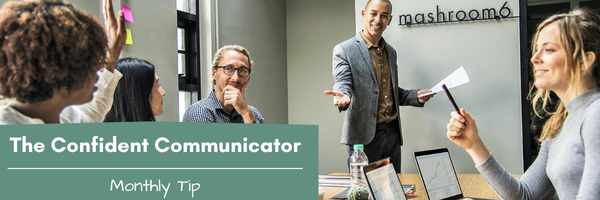We’re Turning 25 — And Giving You Our Top Insights
In 2000, 2Connect launched with a mission: Help professionals communicate with clarity, confidence, and connection. 25 years, thousands of clients, and a whole lot of flipcharts later, we’re still going strong, and it’s all thanks to people like you.
To
6 Strategies to Make Any Presentation Your Own
Have you ever found yourself in the position of delivering a presentation that you didn’t create?
In the world of business, we are often handed a PowerPoint® presentation and asked to deliver it – with confidence! If the prospect of
One Secret Ingredient for Great Presentations
One secret that many accomplished presenters use often goes unnoticed. Yet, when done well, it always boosts the presentation’s effectiveness. The good news? It’s easy to incorporate this secret into any presentation.
That secret ingredient is… timing transitions between slides.
Love from the Podium – 3 Quick Tips
Poor communication is one of the top 5 reasons a relationship ends.
It can lead to resentment, frustration, and misaligned expectations. It isn’t just your partner you want to work on communication with this valentine’s season. Poor communication can be
5 Presentation Tips to Stand Out in 2025
New year’s resolutions can be a mixed bag. Set them or don’t set them? Nail them or peter out come March?
Regardless of your take on this annual tradition, a universal truth at the beginning of a new business year
3 Tips to Spring Clean Your Slides
One Idea per Slide
We often have a lot to share and may be tempted to slather our slides with text. This can cause cognitive overload and our audience may lose track of our story.
- TIP: Limit content to one
Can You Reduce Your Meeting Load?
Make Meetings Matter Newsletter Series
According to Forbes, employees spend an average of 31 hours per month in meetings (over 4 days!) and 50% of that time is considered wasted. Although meeting ineffectiveness is a widespread problem, it doesn’t have
Make Meetings Matter
Make Meetings Matter Newsletter Series
According to Forbes, employees spend an average of 31 hours per month in meetings (over 4 days!) and 50% of that time is considered wasted. Although meeting ineffectiveness is a widespread problem, it doesn’t have
Q & A: From the Boardroom to the Dining Room
Thanksgiving is just around the corner, and you know what that means – delicious food, quality time with family, and the potentially uncomfortable “Q&A” session with relatives. But fear not! Your professional skills are here to save the day. Let’s









